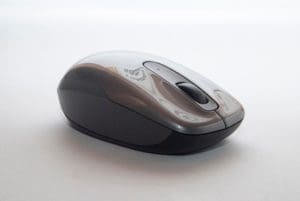 On Nov. 17, 1970, U.S. Patent 3541541A was issued to Douglas Engelbart, a Stanford University researcher. The patent was for the “X-Y Position Indicator for a Display System,” which — if you’re either skilled in tech speak or a computer history buff — you’ll recognize as the computer mouse.
On Nov. 17, 1970, U.S. Patent 3541541A was issued to Douglas Engelbart, a Stanford University researcher. The patent was for the “X-Y Position Indicator for a Display System,” which — if you’re either skilled in tech speak or a computer history buff — you’ll recognize as the computer mouse.
The patent application, filed on June 21, 1967, succinctly explains how a mouse works: “An X-Y position indicator control for movement by the hand over any surface to move a cursor over the display on a cathode ray tube, the indicator control generating signals indicating its position to cause a cursor to be displayed on the tube at the corresponding position. The indicator control mechanism contains X and Y position wheels mounted perpendicular to each other, which rotate according to the X and Y movements of the mechanism, and which operate rheostats to send signals along a wire to a computer which controls the CRT display.”
Give or take a few technological advances, that’s still how a mouse works.
The mouse’s public reveal
Engelbart’s patent application was aided by the “Mother of All Demos,” a fascinating event in computer history with remarkably prescient technology. Engelbart led the Augmentation Research Center at the Stanford Research Institute, and on Dec. 9, 1968, he and 17 fellow researchers presented a 90-minute public demonstration of various technologies they’d been developing as part of an early online system, NLS. Not only did this demo mark the debut of the mouse, but also hypertext, shared-screen collaboration, object addressing and dynamic file linking—basically everything that keeps the corporate world churning along today. You can watch the Mother of All Demos in its entirely on YouTube.
Photo: Oscar Ivan Esquivel Arteaga / Unsplash
